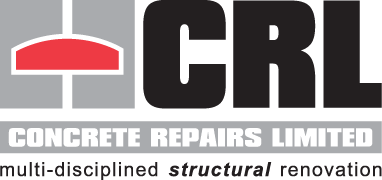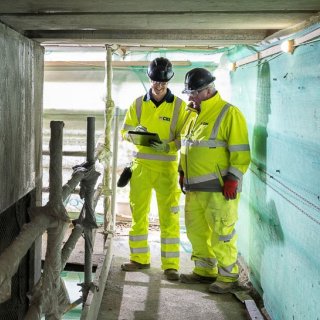The Loudwater Viaduct, which carries the M40 motorway over the River Wye Valley, is a dual three-lane, 500-meter-long structure built in 1968. It is managed by the Vercity Group (formerly UK Highways) under a 30-year Private Finance Initiative (PFI) concession for the M40.
The viaduct comprises twin decks, each with 12 spans, supported by concrete piers up to 20 meters in height. The structure features a steel and concrete composite deck supported by 22 reinforced concrete bents. Each bent consists of a central support column and crosshead beam.
In 2005, deterioration of the crosshead beams was observed, with "concrete blown off the surface in places and corroded reinforcement below." Sandbergs, followed by Hyder Consulting, conducted inspections and identified reinforcement corrosion in the crosshead beams. The cause was traced to high levels of chlorides from de-icing salts on the deck, which had infiltrated through the deck joints located above each crosshead. These joints are where the longitudinal steel plate beams of the deck spans rest on the beams below. Over the years, a design detail, a small upstand on the top face of each beam intended to prevent water from spilling onto the vertical faces, had exacerbated the issue. This detail caused pooling of water, which despite a thin asphalt layer, led to increased chloride infiltration into the concrete.
The investigation revealed that while the damage was not yet critical, or deep, it had the potential to worsen, especially as rainwater runoff continued to introduce de-icing salts during winter months. Recognizing the need for action, UK Highways, responsible for maintaining the viaduct for another 20 years and obligated to return it to the Highways Agency in 2026 with residual life, decided to proceed with repairs. Sandbergs recommended repairing the spalled concrete and installing an Impressed Current Cathodic Protection (ICCP) system to mitigate further corrosion.
ICCP works by applying a small electrical current through the concrete reinforcement to neutralize the effects of de-icing salts. Initially, it was considered to install titanium rods into holes drilled along the beams, but this approach was ruled out due to the density of the 50mm diameter rebar in the beams. Capsis, a specialist corrosion consultant, recommended the installation of a titanium mesh anode, which would be fixed to the concrete surface and covered with a sprayed concrete overlay. This system was expected to provide a service life of approximately 50 years.
Following a lengthy tender and negotiation process, CRL was awarded the contract in early 2006. The initial stages of the project, which began in March 2006, involved setting up traffic diversions and erecting scaffolding to access all 22 beams beneath the viaduct, which span an industrial area and a local road.
Concrete repairs commenced with hydro-demolition to remove the spalled concrete, followed by the application of sprayed concrete. Ultra-high pressure water jetting was then used to prepare the beam surfaces, leaving an exposed aggregate finish for the attachment of the titanium anode mesh. Once the mesh was in place, it was overlaid with sprayed concrete, which was left in its natural ‘as-sprayed’ finish to prevent delamination and ensure the integrity of the electrical connection between the mesh and the concrete. The final overlay was then treated with a waterproof coating for additional protection.
All cabling was concealed within the concrete overlay and routed through the central duct between the two road decks. Adjacent beams were connected via junction boxes and wired to a mains power source to deliver a permanent direct current of 5V to 10V. The transformer rectifier (TR), power supply, and computer control system were housed in a single box unit at the base of one of the piers for easy access.
CRL was the main contractor for the concrete repairs and was responsible for the design (meeting Hyder’s performance standards) and installation of the ICCP system. The only significant challenge during the project occurred in July, when concerns arose that drought restrictions might suspend the spray concrete works due to the intense heat.
This project was at the time one of the largest bridge cathodic protection systems utilising a mesh and overlay anode installed in the UK since the A92 Tay Road Bridge in the early 1990s. It also marked the first time a Design, Build, Finance, and Operate (DBFO) client adopted this corrosion control method for managing a highway structure.

This project was at the time one of the largest bridge cathodic protection systems utilising a mesh and overlay anode installed in the UK since the A92 Tay Road Bridge in the early 1990s ...





























